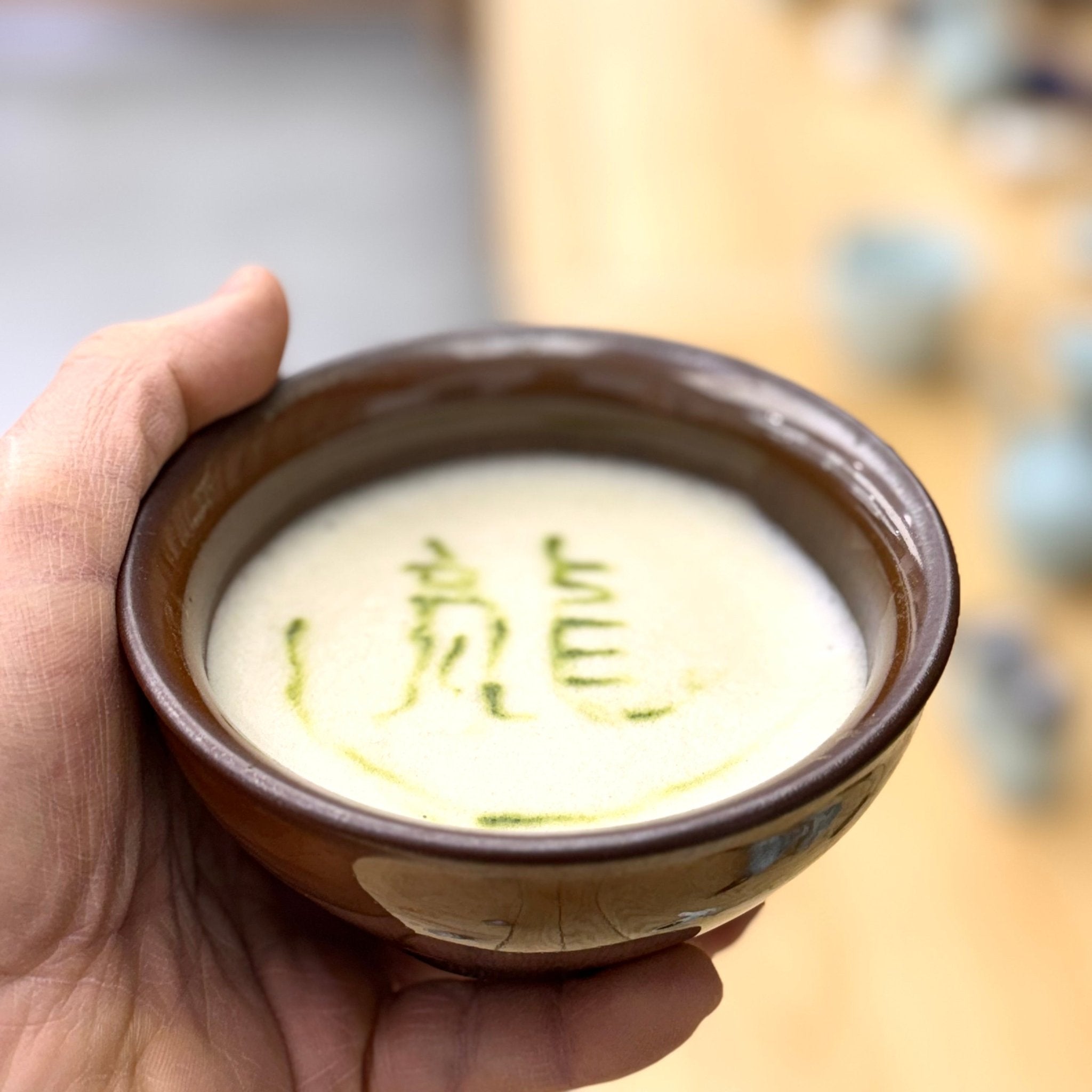Incredibly frothy and creamy, featuring notes of cinnamon, birch bark, spring dandelion and chrysanthemum.
It's easy to forget that Song Dynasty China gave birth to the whisked tea culture that thrives today in modern day Japan and Korea. Fortunately for us, a few scholars like Zhang Wenhua and Wu Fion are working to revive China's passion for old traditions... and they share both tea and knowledge with us.
Type: White Tea
Origin: Fuding (Fujian) 90%; Simao (Yunnan) 10%
GPS: 27.3ºN 127.2ºE | 22.8ºN 100.9ºE
Brewing Guide:
Tea: 1g
Water: 150g @ 75ºC
Warm up your tea bowl and dry it well (just like with Japanese matcha)
Add 1g of tea, 20g of water, and whisk into a homogenous tea paste.
Over the next 5-8 minutes, progressively add a few grams of water and keep whisking your tea, creating creamy froth. You need to whisk both the bottom of the bowl (generating froth) and the top (breaking larger bubbles and thickening the 'cream').
Over the next few weeks, we will release a few 'how to' videos for this tea. This is all fairly new for our bar team, as we barely discovered this tea in our latest trip to China.
Really cool fact: the froth is so stable that you can write a message (using matcha or hoji powder) on the white froth.
This tea is shipped in an aluminum foil bag. If you would like to store it in a nice container, please consider this one :
TEA IN THE SONG DYNASTY
China's Song Dynasty is known as one of the most 'romantic' periods in the history of tea; every single piece of your tea practice had a deep meaning. Song Dynasty people, by the way, consumed tea in a powdered form.
To be clear, the tea that they drank was quite different vs. modern day matcha; their tea was most likely not as bright green (since shade growing was a much later introduction), and their tea tools were also unique. It is safe to say, however, that tea drinkers in the Song Dynasty provided the inspiration for the incredible whisked tea traditions of Japan and Korea.
The whisking game was serious business, using bamboo chaxian (think early matcha whisks) to whip up that perfect froth. Monks, scholars, and even Emperor Huizong—who wrote a whole book, Daguan Chalun, about tea—were obsessed. At places like Jin An Temple in Hangzhou, Chan Buddhist monks were huge tea fans, sipping it to stay sharp during long meditation sessions. Japanese monks, like Eisai, studied at Jin An and got hooked, taking the whisked tea vibe back to Japan, where it sparked their tea ceremony. Tea competitions, or dou cha, were also avery popular in Song tea houses.
Jingshan Temple (Hangzhou), where many Buddhist monks learned about the whisked tea that gave birth to modern day matcha.
Buddha statue in Jingshan
ABOUT THE CREATOR OF THIS TEA
Zhang Wenghua's farm is located in a beautiful valley hidden among forested mountains near Changxing, famous for the Zisun cultivar. The Lao Cong Zisun cultivar tea trees on her property are 70-80 years old. Most of the leaves she harvests are handcrafted into loose leaf green or black teas but a very small amount is converted into these rare, outstandingly sweet coins.
Zhang has a magnificent farm in Changxing, where she grows old cultivar Zisun and Bai Cha. For this tea, however, she blended and micro milled leaves that she sourced from her friends in Fujian and Yunnan.
FION WU'S EXCELLENT CLASS: INTRODUCTION TO SONG DYNASTY TEA
Important: Fion's class includes the roasting and milling of your tea. Our product 'Song of the Song' is already micro-milled.
VIDEO
Grower on the map























